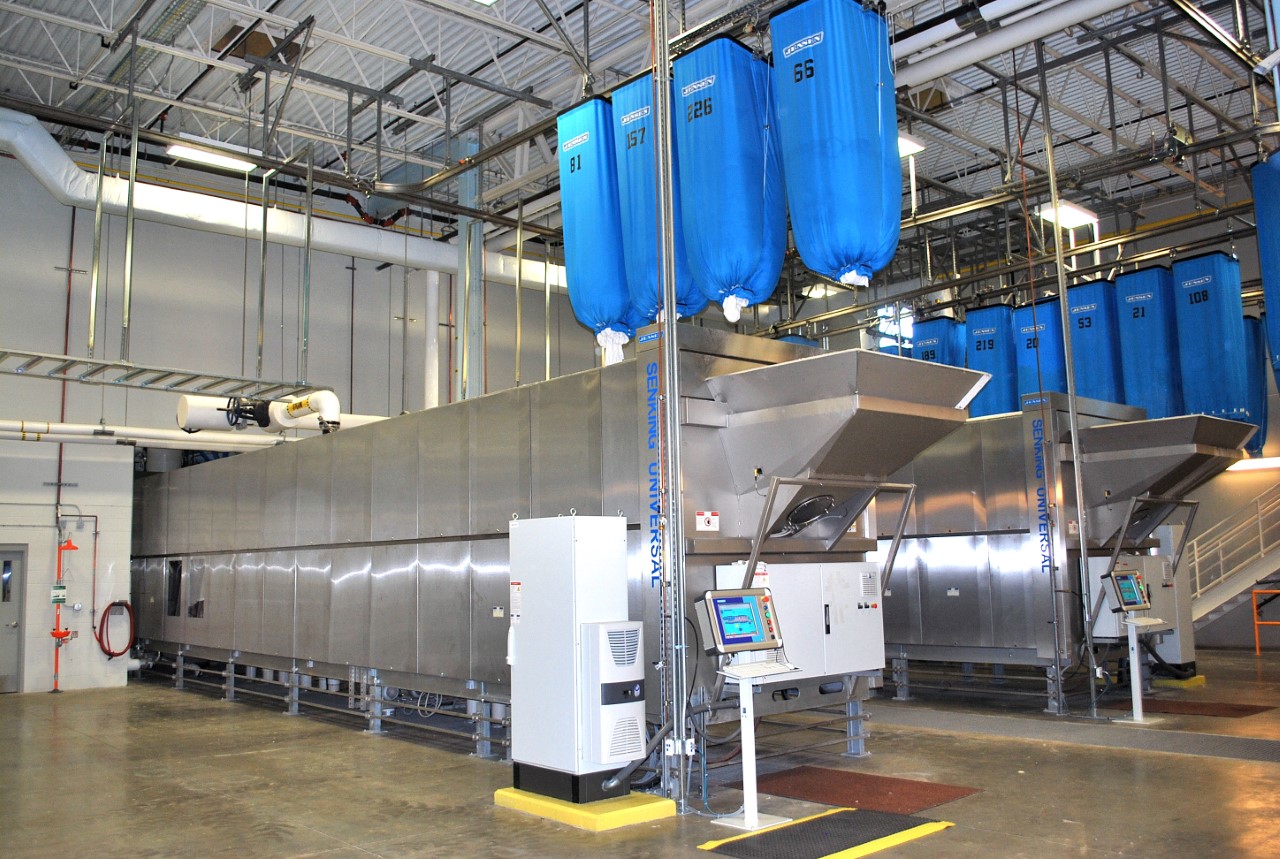
By David Netusil, Manager-Sales Support and Marketing, JENSEN USA, Inc.
Life hacks are very popular in social media. The term refers to a trick, skill or novelty method that boosts productivity and efficiency – in all aspects of life. Some life hacks are humorous and others may sound a bit crazy but some of them are actually quite useful.
Let’s take a look at the top ten ‘laundry life hacks’ which will guide you to choose the best tunnel washer and equipment provider for your facility.
In any laundry, productivity and efficiency are also key words. Of key interest to laundry managers is how they can grow their business, be more productive and efficient. So when considering meeting that goal with the help of a tunnel washer, there are a few things to consider that will determine the actual batch size and module count of a tunnel washer.
Step 1: Volume
The linen volume or amount to be processed will determine the size of the tunnel you need. Taking that, and the possibility of future growth, into consideration will lead you to a certain batch size and number of compartments necessary for your tunnel. In some cases, two or more tunnel washers are the right choice.
Examples are, but not limited to: if you are processing COG (customer owned goods) work in smaller batch sizes, you could exceed the maximum output of a single smaller batch tunnel. Or if you are processing large volumes of rental work, you could exceed the production limitations of a larger batch tunnel.
The scenarios for choosing two or more tunnels are vast. Each laundry is different, therefore it is always recommended to contact an expert to help navigate through the choices.
Step 2: Linen
Types of linen help determine tunnel washer configuration, such as healthcare linen, linen for nursing homes, hospitality, industrial uniforms, dust mats or cleaning mops.
Different linen types require special processes:
Uniforms or industrial workwear might require extra bath exchange facilities in the pre-wash or more wash beaters for increased mechanical action.
Dust mats with a lot of sand and particles need special recovery tanks to collect the residual dirt. Light and voluminous items like under pads from hospitals or nursing homes are often under loaded which has an impact on the machine capacity and therefore the size of the tunnel washer. This is also valid for polyester and blended fabric items.
Step 3: Soil Level
Heavily soiled linen and garments are recommended to have extra bath exchanges or need more mechanical action.
For greasy items, a high pressure cleaning system with double drums is recommended to clean after processing oily and greasy goods to avoid contamination of following batches.
Soiled linen requires longer wash times, which has to be considered when sizing the machine.
Lightly soiled items can be processed faster compared to other linen categories which increases the capacity of the tunnel washer.
Step 4: Colors
Laundries processing linen of different colors may have a series of color changes during the day. For frequent changes, bath exchange rinsing is perfect to process different colors directly one after the other for highest flexibility and efficiency.
Also to consider, energy and water savings become more and more important as resources are limited and are becoming more expensive. This effects a laundry’s profitability. So to keep the water consumption low in spite of frequent color changes in the process, additional recovery tanks for a separated reclaim of white or colored water in large dedicated buffer tanks is an advantage.
Step 5: Work order
The work order and how the entire volume can be processed through the tunnel washer system has an impact on the machine design as well. Laundries are often faced with little or no space in front of the machine for a loading step conveyor. If that’s the case with your laundry, think high. Use the space under the roof and increase the productivity of the tunnel washer by optimizing the loading process.
For Part 2 of Life Hacks for Laundries – Choosing a Tunnel Washer in 10 Easy Steps click here.
About the Author
David A. Netusil is the Manager-Sales Support and Marketing for JENSEN USA, Inc. in Panama City, Florida. He has over 28-years experience in the industrial laundry industry.












